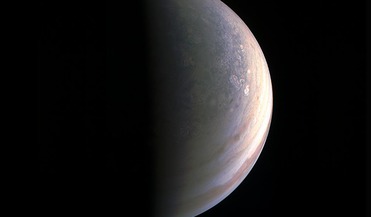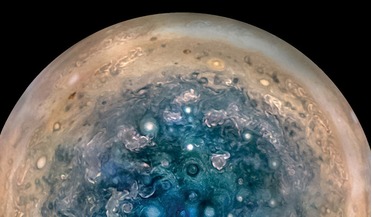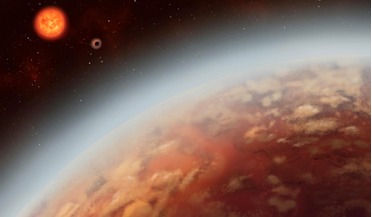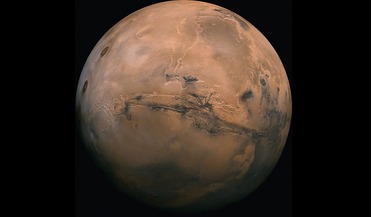 May 2018
PLATO the habitable zone explorer
May 2018
PLATO the habitable zone explorer
... solar system might well be atypical; in addition to the small rocky planets, ice giants, and gas giants of the solar system, we have found hot Jupiters, gas-dominated dwarf planets, super-sized Earths, and even miniature versions of Neptune...
 05 September 2016
Surprises for Jupiter as Juno sends back its first images
05 September 2016
Surprises for Jupiter as Juno sends back its first images
...Earth’s position in respect to Jupiter's south pole, the gas giant’s southern aurora can hardly be seen, therefore Juno's unique...proximity. "Jupiter is talking to us in a way only gas-giant worlds can," said Bill Kurth, co-investigator for the Waves ...
 26 May 2017
First results from Juno mission
26 May 2017
First results from Juno mission
...in the solar system, prior to Juno arriving at the gas giant, now measurements taken with Juno's magnetometer investigation (MAG) ...planet. However once every 53 days, Juno whizzes down the gas giant from the north to south pole over a two hour ...
 11 September 2019
First detection of atmospheric water vapour on 'super-Earth' in habitable zone
11 September 2019
First detection of atmospheric water vapour on 'super-Earth' in habitable zone
... body. This sizeable world is more of the latter – a rocky world. Density calculations of 3.7g/cm3 confirmed that K2-18 b is not a gas giant like those we are familiar with in our Solar System. But neither could it be called Earth-like. Its...
 11 March 2020
Ultra-hot exoplanet literally rains iron say astronomers
11 March 2020
Ultra-hot exoplanet literally rains iron say astronomers
.... This puffed-up planet is unflatteringly referred to as a bloated-hot Jupiter, because it is nearly twice the size of our own gas giant and has a radius 20 times bigger than Earth’s. It orbits an inflated F-type star known as WASP-76, an ageing and...
 October 2020
Space 2069 - back to the Moon, to Mars and beyond
October 2020
Space 2069 - back to the Moon, to Mars and beyond
...the asteroid belt and beyond to the gas giants of Jupiter and Saturn, and the ice giants of Uranus and Neptune in the cold,... during the formation of the south polar Aitken Basin by a giant impact billions of years ago. The baseline for this mission is...